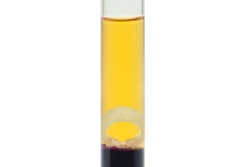
When the Drug Supply Chain Security Act (DSCSA) was signed into law in 2013 as a way to identify and eliminate counterfeits products and improve traceability associated with recalls, the U.S. Food & Drug Administration (FDA) said that requirements would be implemented over a ten-year timeframe.
Implementation phases include: lot-level management, which started in January 2015; item serialization—to be addressed in 2017; with serialized item-level traceability to be complete by 2023, thereby allowing supply chain partners to trace the ownership back to the initial manufacturer or repackager.
This means that pharmaceutical companies will have a new set of serialization requirements beginning in 2017. Starting next year, manufacturers and repackagers must serialize packages using a product identifier, serial number, lot number and expiration date.
To help manufacturers comply with the item-level traceability requirements, standards organization GS1 US has published a new release of its guideline, “Applying GSI Standards for DSCSA and Traceability (R1.2).” This release builds upon version 1.1 of the guideline and takes advantage of new features in the GS1 Electronic Product Code Information Service (EPCIS) and Core Business Vocabulary (CBV), which allows trading partners to share information about the physical movement and status of products as they travel throughout the supply chain.
The FDA selected EPCIS as a method that can be used to comply with DSCSA data exchange requirements. And the updated GS1 US data sharing guidelines, announced last week, instructs users on how to implement these standards, and includes a DSCSA Implementation Suite with three reference documents that includes information on business process applications.
The new guidelines were developed with the help of the GS1 Healthcare US Secure Supply Chain workgroup, a collaboration of manufacturers, wholesalers, retail pharmacies, healthcare providers, government agencies and industry associations. Together they have examined how GS1 Standards can best be applied to support the DSCSA and traceability. To that end, their work produced updated and expanded supply chain choreographies and exception scenarios—including detailed diagrams, flowcharts and XML examples—to demonstrate how to apply and use the standards in business processes.
“As industry completes its preparations to go live with DSCSA serialization requirements for 2017, pharmaceutical companies are increasingly focusing on the journey to DSCSA item-level traceability, which must be in place by 2023,” said Greg Bylo, vice president of healthcare, GS1 US. “The new release of the guideline provides the tools they need to plan, pilot and implement an EPCIS-based approach to address those requirements and supports the main goals of DSCSA—increased transparency and security in the pharmaceutical supply chain.”






















